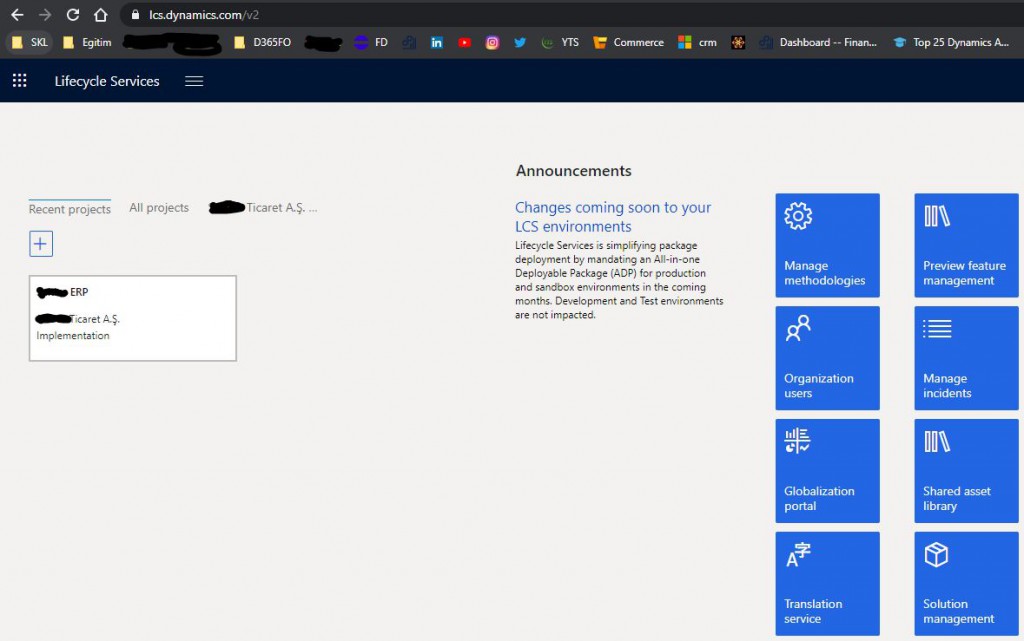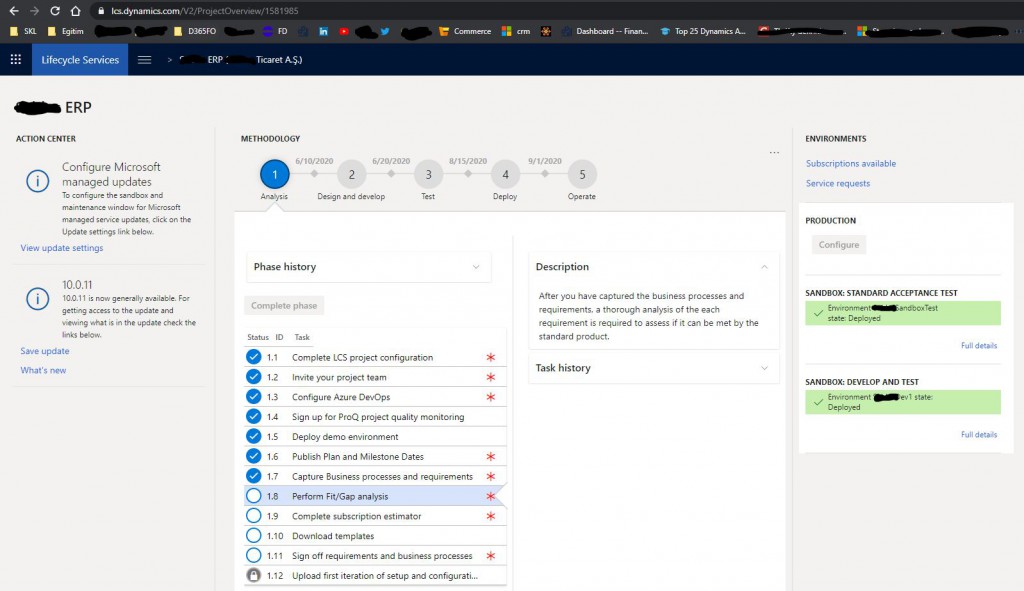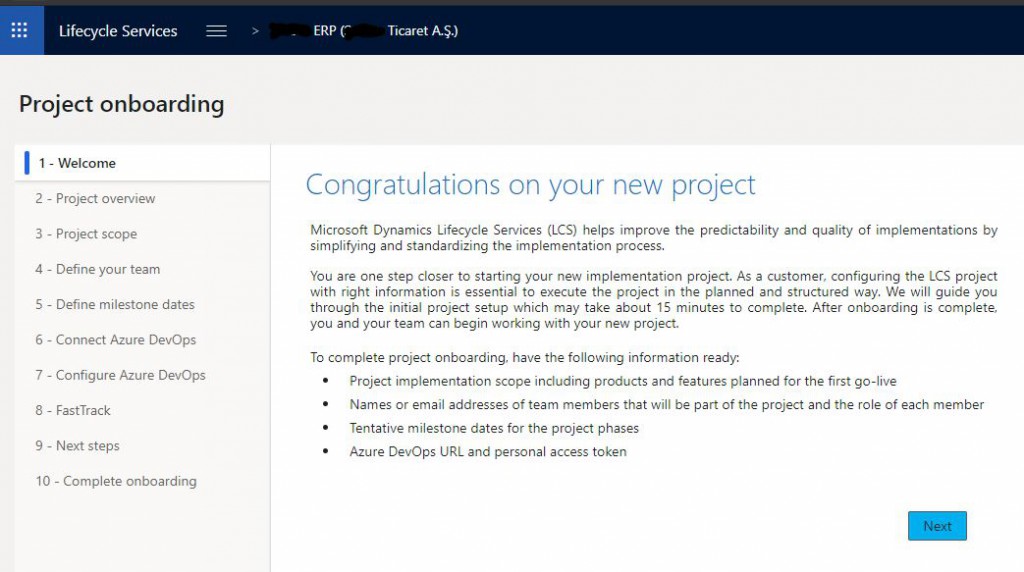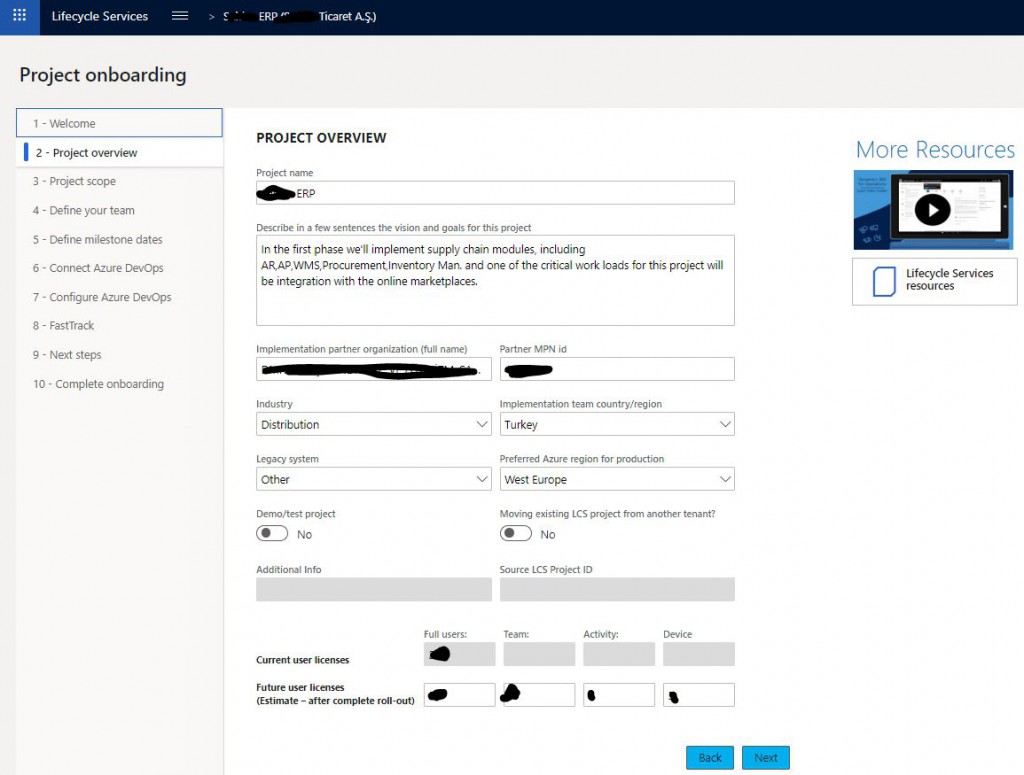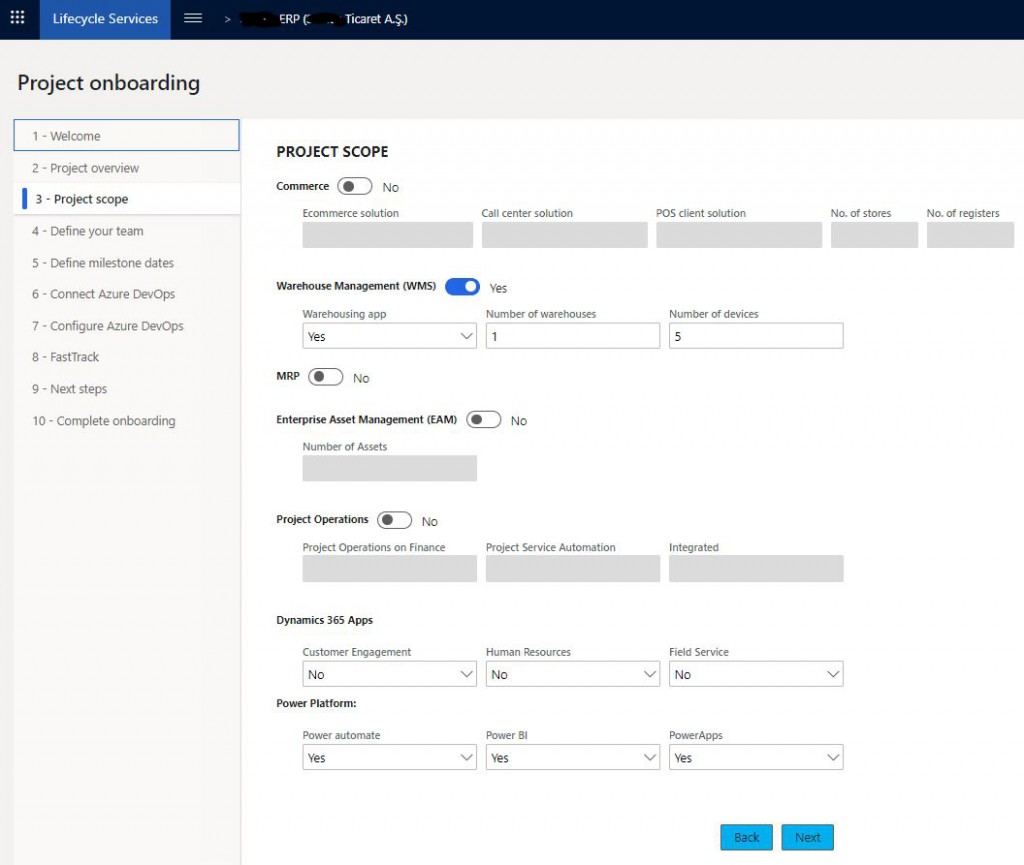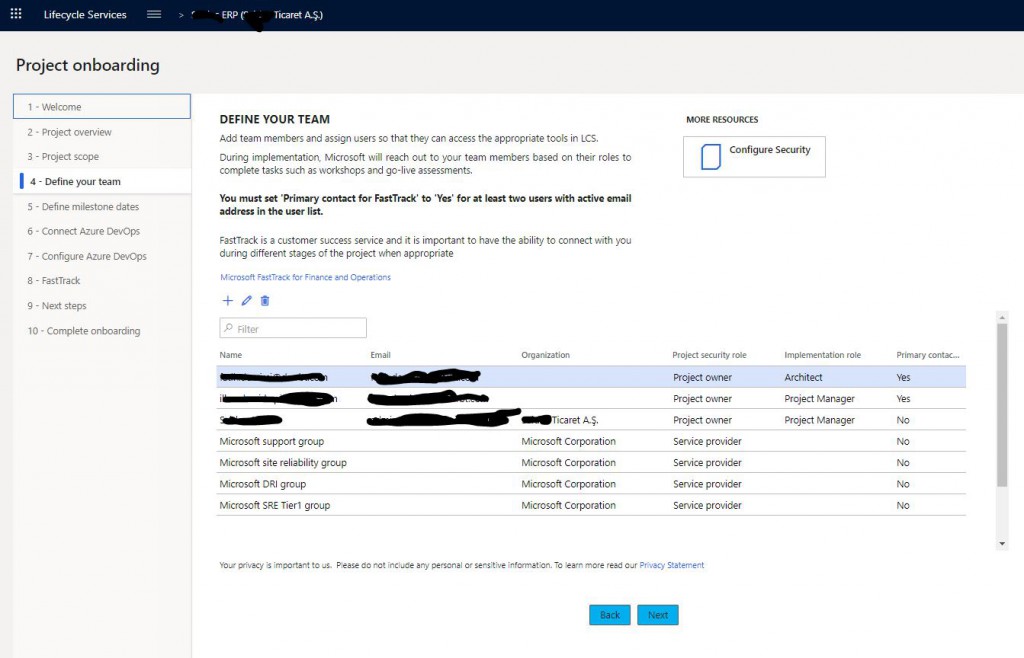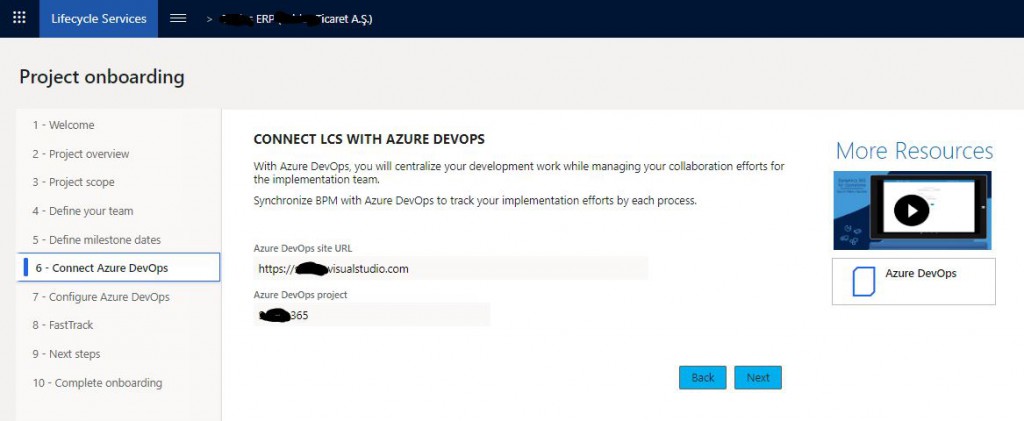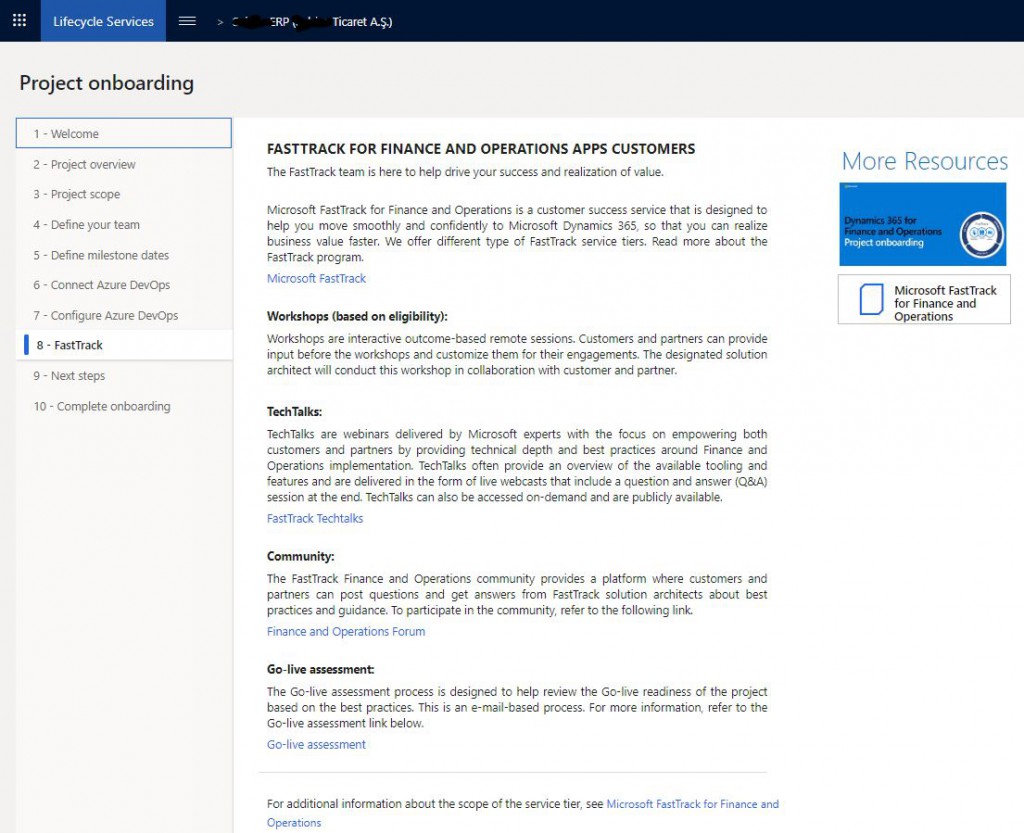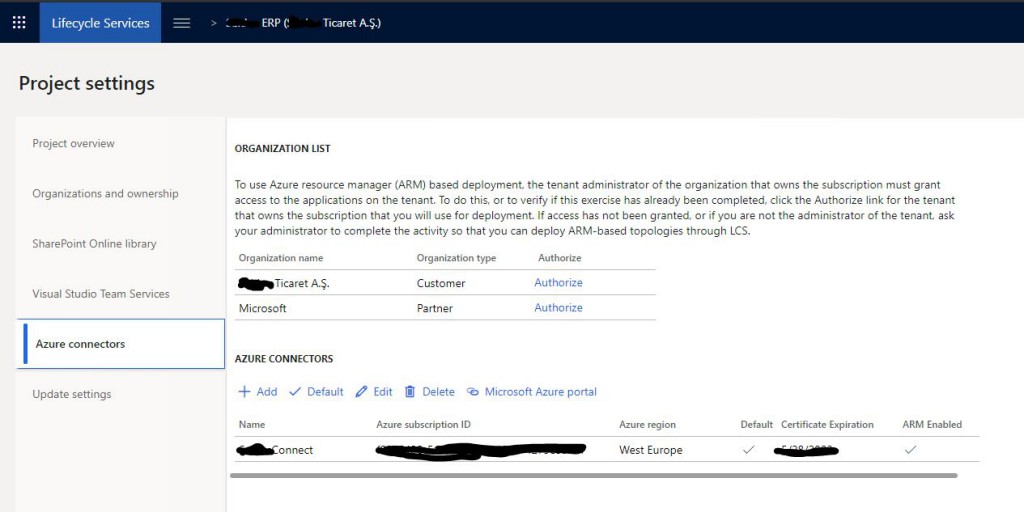How to set up a new Dynamics 365 Finance and Operations application project through Microsoft Life Cycle Services (LCS).
In this article, I will try to tell you the steps required to start the adaptation project after the sale of a new license for Dynamics 365 Finance, Dynamics 365 Supply Chain Management or Dynamics 365 Commerce.
First of all, the activation process should be performed in Azure Active Directory (Azure AD) with the company’s Tenant Administrator account by following the steps below:
- Create a new session as InPrivate / Incognito and open the Microsoft 365 Admin Center.
- Log in with the Tenant Administrator account.
- Go to Billing> Products & services and make sure the product you purchased is there. If not, contact your business partner.
- If the Subscription is active, login to LCS to trigger the Implementation Project creation.
- Log in to the LCS with a Tenant Administrator account on a new page.
- Confirm the boxes that appear and the project will be created.
- Tenant Administrator is automatically assigned to the Project Owner role. You can then view the project in LCS.
After completing the above steps, if there is no problem, the Implementation project will be created as shown in Image-1.
Image-1
When you click and enter the project, you will see a menu on the right as shown in Image-2. The first thing to do is to click on Project onboarding and start making the necessary definitions. When you click it, a wizard will open and steps will appear. You can skip the steps. You can return to them later.
Image-2
After completing the steps, you will have a project screen similar to Image-3. I will try to explain the Environments section on the right in detail in another article.
Image-3
I had already defined the steps for this project and had not taken a picture. So I clicked on Project Onboarding from the hamburger menu and reopened it and took the pictures. It is not exactly the same as the first form, but the definitions are the same.
Image-4
Welcome page. It is useful to read all the explanations in the steps carefully.
Image-5
There are some important fields on this page. First of all, a name and a description are required for the project. It is useful for everything to be in English. Because Microsoft employees who will assist you need to be able to understand the information about your project. Here you choose the business partner you will work with on the project.
Industry: The field of activity of the company is important because the FastTrack engineer to be assigned to you is selected according to the industry expertise here. For example, if the project is a retail project, an engineer specialized in retail is assigned to you.
Implementation team country/region: The location of the main project team.
Legacy system: If there is a migration from an older version or a different ERP, you can select it here.
Preferred Azure region for production: Currently the optimal choice for Turkey is Data Center West Europe. Generally we choose this in projects.
Future user licenses: If you expect an increase in the number of languages when the whole project goes live, you can specify it here. It is useful to do this because the live server configurations are set according to your license and some information you provide.
Image-6
In this section, we select the modules to be used for the project and the necessary settings. We marked warehouse management and MRP, since they will be used in this project. Also, we mark any of the other Dynamics 365 products that will be used. We marked Power Platform, since only that will be used in our project.
Image-7
In this section, we define the project team. You do not need to enter the whole team at the first stage. It is useful to define Project Manager and Architect roles especially for the FastTrack team to communicate. Those starting with Microsoft come automatically, you don’t need to do anything for them.
Image-8
Project dates are required to be entered at the first stage. A separate window opens for that. The dates can be changed later, but you need to enter the correct dates at the first stage. The whole project plan is created according to these dates and the FastTrack team supports you according to these dates.
Image-9
This is one of the most important steps. Dynamics 365 projects are now managed through Azure DevOps. First, you need to set up Azure DevOps with the given Admin account and create a TFVC type project. Unfortunately Git is not yet supported. I’ve come across Git uses in some articles, but haven’t tried it yet. You will then establish the relationship between LCS and Azure DevOps here. There are a lot of details on Azure DevOps, which I will cover in another article.
Image-10
After connecting the project, you should establish a link between LCS and Azure DevOps steps. I leave this part as it is. In the future, there may be projects that we change according to the project needs.
Image-11
FastTrack introduction and related links are available on this page. Especially TechTalks has very good content, you should definitely watch it before the project.
Image-12
This section provides general information about the project steps and useful links.
Image-13
In the last step, we complete the project start.
Image-14
One of the most important settings you need to set after you finish is to add Azure Connection. If the company does not have an Azure account, you must start a membership through the Azure Portal with an Admin account. Here there are a few steps you need to follow. To connect LCS with the Azure you have opened, you must download the certificate and upload it to the Azure Portal. You must also authorize Dynamics 365 application installation via the Azure Portal. I will prepare a separate article for this section.
Image-15
After completing all these steps, you are ready to set up the media. Depending on the license you purchased, Microsoft gives 3 media rights shown in Image-16. There is no charge in these media. You pay according to the pay-as-you-go method for each additional environment you want to set up. Often additional environments are needed for DevBox and Test. You can install these machines from the Cloud-hosted environments menu.
PRODUCTION: It is deployed by Microsoft in the final phase of the Project.
SANDBOX: STANDARD ACCEPTANCE TEST: This machine is Tier-2 and is mainly used for Testing. We setup this environment. By setup, I mean we adjust the settings, determine its type and Microsoft prepares it for us.
SANDBOX: DEVELOP AND TEST: We usually set this machine as the Build machine. They have removed connecting to these machines with the Admin account, so you shouldn’t use this machine for development.
Image-16
In this article, I tried to explain the necessary steps for starting the project after licensing. It is necessary to consider many different options depending on the size and complexity of the project. There are now three indispensable places for an ERP project and you should know them well. LCS, Azure and Azure DevOps. Knowing the basic features of these three products, each of which is a separate world, makes it easier to project and reduce costs. I have made an introduction to the LCS and I will continue to explain the details.
Regards.
www.fatihdemirci.net
TAGs: Microsoft Life Cycle Services, LCS, Azure, Azure DevOps, Project onboarding, Microsoft Dynamics 365, MsDyn365FO, MsDyn365CE, MsDyn365, Dynamics 365 Insights Power BI, Power Automate, Power Apss, Power Virtual Agents, what is Dynamics 365, Dynamics 365 ERP, Dynamics 365 CRM
